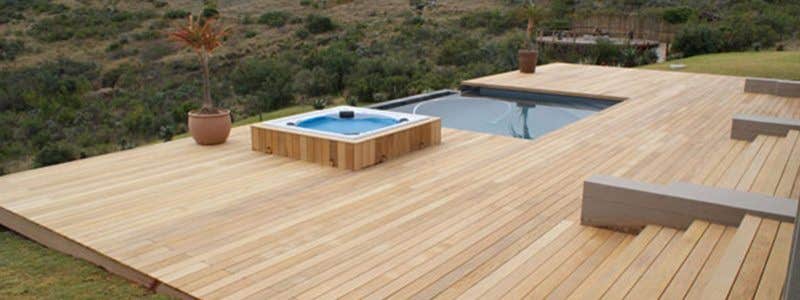Decking season is upon us and we thought it would be timely to offer some recommendations.
Board Preparation
As a minimum, a protective finish should be applied to all surfaces (including any freshly cut ends) of each decking board, preferably before fixing to the joists. A protective finish includes products that penetrate the surface of the timber and products that provide a film or coating to the surface of the timber.
A second coat is required to the exposed surfaces after installation is completed. Recoating should be done every 1 to 2 years to maintain the coating and retain the timber colour.
These are general guidelines only, please refer to the protective finish manufacturer’s recommendations.
Deck Gap
Plan to leave a sufficient gap to allow the boards to expand and contract.
Boards 130mm and wider will expand approximately 0.5mm for every 1% increase in moisture content. Usually during winter the increase in moisture content is around 4-6%. Hence each board could expand 2-3 mm.
Recommended gaps for boards up to 90mm is approx. 4-5mm and for boards 130mm approx. 6 –7mm.
Ventilation
A deck structure must have good sub deck ventilation. Allowance should be made for good cross flow ventilation. Avoid solid perimeter walls as a damp sub deck will cause the bottom of the boards to take up moisture and develop cupping. If there are solid perimeters, specially designed vents and fans should be installed to provide cross ventilation. Also ponding of water should be avoided under the deck.
Install a Membrane Over the Joists
An important step in deck construction is to install a waterproof membrane on the top of the joists underneath the deck boards. This helps to keep the joint dry, limits the chance of rotting and gives better fixing for your nails or screws.
Pre-Drilling
Drill a pilot or countersunk hole then drill holes to facilitate the decking screws. This will assist in reducing the stress the decking will experience during seasonal movement changes in the overall deck. This procedure should limit the chance of boards cracking and splitting. If using a decking nail, ensure the board ends are pre-drilled.
Type of Fixings
Always use specially designed decking nails and screws. They should be hot dipped galvanised or if you are close to saltwater, use stainless steel. For 19mm decking, nails (such as ’Timberdeck’) and decking screws should be at least 65mm length. With decking screws, a minimum 10 gauge is recommended for Treated Pine (softwood) joists.
For 130mm and wider boards, screws are recommended and must be 65mm length minimum and Type 17, 14 gauge with counter sunk head is recommended.
Timber Species Selection
The most popular timber for decking is Merbau, a tropical hardwood from South East Asia. It contains natural oily substances that give it great durability for a deck application. It is rated as Durability Class 1 with an expected life up to 50 years above ground.
It has less shrinkage/expansion than the Australian durable hardwoods such as Spotted Gum, Blackbutt etc. One downside is that Merbau has a natural tannin that will bleed out and stain exposed concrete, brickwork etc., very hard to remove as well. Therefore, best to apply 1 coat of the selected finish all round prior to installing to seal the timber, then apply 1 or 2 finishing coats after completing installation. This is a general guideline only, please refer to the protective finish manufacturer’s recommendations.
Source: Timber Merchants Association - Revised August 2014




